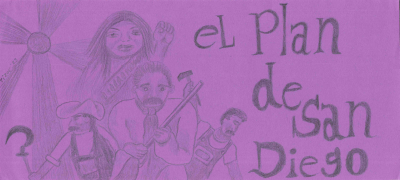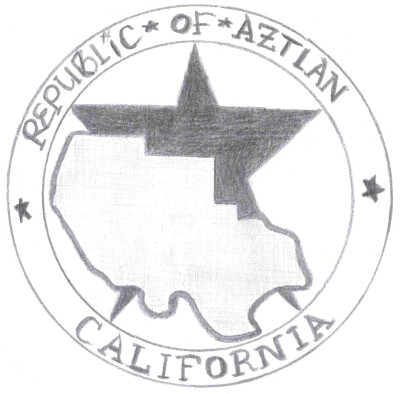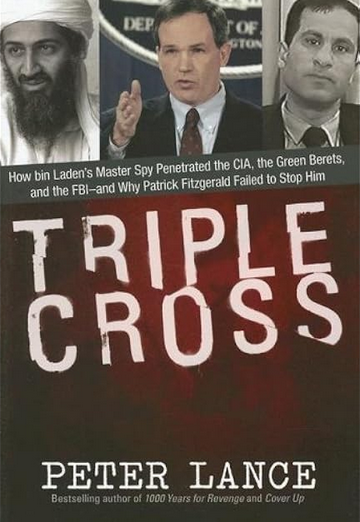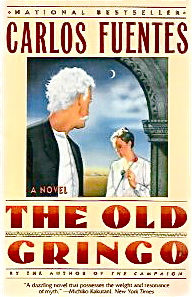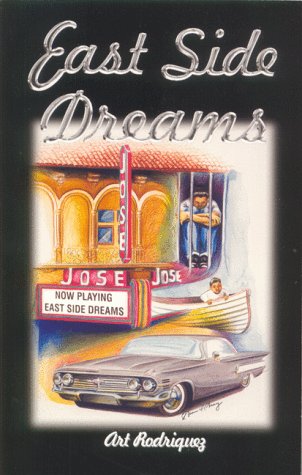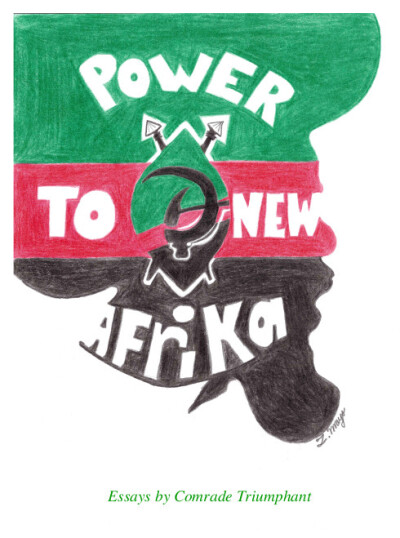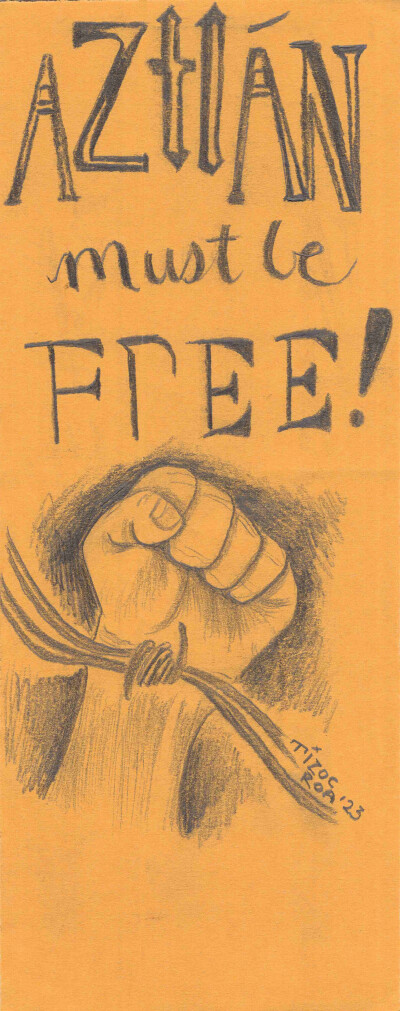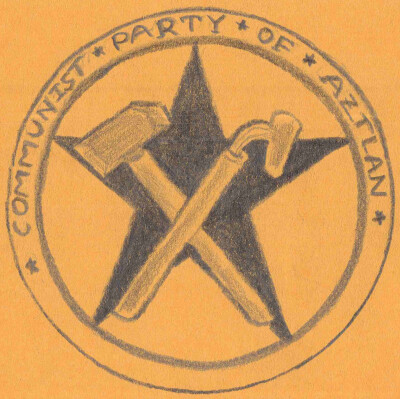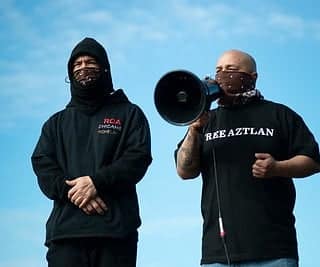
Review (Part 2): Kites #8 on The RCP-USA of the 1960s
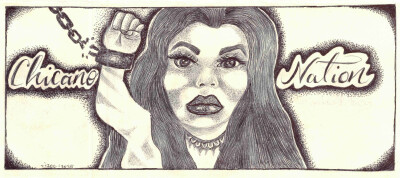
by the Organization of Communist Revolutionaries
Kites Journal #8
13 March 2023
This is Part 2 of the review of this revealing work.
Could many in the U.$. left be colorblind?
In summarizing the intro to the sixties the writers once more fall into the ideological swamp that we noticed in Part 1 of our review of this work. They state in part:
“Students, Black People, and (at the end of the Sixties ) soldiers constituted the main forces of rebellion…”
This continues in the same erroneous tradition as the RCP line. Statements like this highlight that, and RCPers have heard our stance before, but much of the non-Chican@ left, here in the snakes are what we of the ROA have come to define as colorblind. That is they only see Black and White struggles against empire. This outdated line needs to be “buried” along with the CP-USA that was previously criticized in Part 1 of our review. This colorblindness is what prevents any real revolution on these shores, especially with the Third World on our doorstep. Colorblindness is a major obstacle to many. Asked about the nation by us in the past, the RCP and their ilk have brushed it off.
“We don’t agree with those who say ‘Put my nation in front of the line’”, the RCP and their ilk have said in prior talks. Our point here is that the Chican@ nation simply be acknowledged as being in line period. For perspective of the times, the Organization of Communist Revolutionaries (OCR) declare erroneously that “Students, Black people and soldiers” were the supposed “main forces” of rebellion. Yet, since the end of the sixties Chican@ revolutionary orgs were developing throughout Aztlán. Groups like the Brown Berets, Chican@ Liberation Party and the Crusade for Justice that were brewing in this time would later be alleged by U.$. “law enforcement” of mobilizing the largest student strike on these shores with the school “blow outs” that included over 10,000 Chican@ youth, that mobilized over 10,000 people in a Chican@ anti-imperialist action in East L.A. called the Chicano Moratorium that downed a police helicopter and was alleged to have committed the only bombing of a CIA office on U.$. soil ever(1) not to mention many other instances of armed struggle.
The idea that any rebellion in these false U.$. borders does not include the Chican@ Nation is simply mierda. Those who uphold this thinking deserve full membership in the RCP-USA as their line is in goose step.
The tactics of “divide and conquer” employed by massa have worked so well on all of the masses here in the United Snakes; even within the so-called “Left” that not only are some folks pitted against other oppressed but some have come to not even acknowledge those in the trenches right beside them. Mao warned about who are our friends, who are our enemies. Malcolm X reiterated how we can end up loving our enemies and hating our friends.
BPP Legacy
As this work delved into the history of the Black Panther Party, it highlighted lessons learned. We agree with the analysis on the Panthers for the most part. The Panthers carved a path of resistance yet unseen in many ways for all of us. At the same time their imprint taught us the limits under U.$. imperialism, even when united fronts and allies are strongly in support, it is still not enough, without structural foundations in place. In this writing the authors frame it nicely in regard to the Panthers:
“The development of a vanguard party is not the same thing as and cannot wait for the development of a revolutionary situation. The ideological consolidation, theoretical development program and organizational apparatus of a vanguard party must be built consciously and systematically before the emergence of a revolutionary situation if the vanguard is to have the ability to withstand and advance through the pressure of intense events and vicious repression.”(2)
The state repression will come with victories small and large. Even when victories are small and an organization is not numerically large the organizers may down play the threat they pose to the state. But the state and their agents sometimes see the threat before the organizers, before the revolutionaries can see it and react. For this reason the vanguard must move in accordance to our potential threat to the capitalist state.
White Proletarians?
We disagree with the writers on their economic analysis in regards to who is a proletariat here in the snakes. The writers state:
“Labeling oppressed nations and nationalities in the U.S. as internal colonies, while morally justified, does not provide the analytical foundation for such a strategy and program. Instead suggesting separate struggles to liberate each”internal colony” perhaps linked by solidarity and a common enemy. The “internal colony” analysis fails to grasp that there is a multinational proletariat in the U.S. disproportionately made up of people of oppressed nation(s) and nationalities but also including white proletarians which bring together people of different nationalities who have a common class interest and similar but variegated experiences of exploitation and conditions of life that is in the strategic position, as a class, to lead the revolutionary overthrow of U.S. imperialism.”
Although many revolutions were fought and won by multi-national parties and organizations – including the Chinese Revolution and victory of 1949 – we disagree with the writers that a “white proletariat” exists within these false U.S. borders. Furthermore we do believe that there are internal semi-colonies, and the Chican@ nation, aka Aztlán, is one such internal semi-colony. The writers state that labeling the oppressed nations as such does not provide the analytical foundation for such a strategy and program but we would refer to the Chicano Red Book as the ROA refers to our precious book Chican@ Power and the Struggle for Aztlán, which does indeed provide the analytical foundation for such a strategy and program as it is Chican@ Maoist ideology. As for the bourgeoisified crumb-snatching First World labor aristocrats that are referred to as “white proletariat” we will refer the readers to MIM Theory # 1: A White Proletariat? for a more in depth examination of the white labor aristocracy in the occupied territories or Zak Cope’s Divided World, Divided Class.
Despite the writers alluding to the problematic nature of revolutionary nationalism we feel otherwise and side with Lenin on this:
“In the same way as mankind can arrive at the abolition of classes only through a transition period of the dictatorship of the oppressed class, it can arrive at the inevitable integration of nations only through a transition period of the complete emancipation of all oppressed nations, i.e. their freedom to secede.”(3)
Aztláns secession will be a prelude to how the Chican@ nation votes via plebiscite on our way forward. No bourgeoisiefied worker will define our struggle or pre-determine who we consider the proletariat here in the First World. As we have come to the conclusion through our own scientific study that the reserve army of labor here in the United Snakes is imported, that is, the proletariat is Mexican@ for the most part.
We run into more colorblind assumptions in this writing in regards to the writers views on mass imprisonment. They seem to continue with the outdated 50 year-old lenses of mass incarceration when they state:
“The entire justice system, from the police to prosecutors to prisons, was (and still is) used to keep the Black masses”in their place” and became a defining feature of their daily lives.”
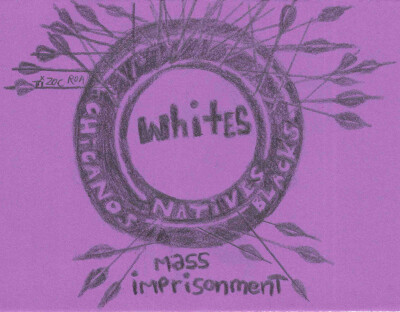
It seems to be describing the 1960’s or 70’s but in TODAY’S world it is the Brown masses who are feeling the brunt heel of the injustice system. The U.S. Federal prison system today reports 8% of its population being Mexican citizens, and another 8% not being U.$. citizens. Meanwhile 38.6% are reported as “racially Black”, while 29.4% are “ethnically Hispanic”.(4) The Federal prisons are often more harsh than state prisons, and more isolated, with families living in other states or other countries. Children and babies are being imprisoned in ICE kamps; babies handcuffed in kourt; Brown babies separated from parents and then “lost” in foster care. Brown people are now being sent to Guantanamo Bay to await deportation, or straight to supermax prison in the U.$.-fascist state in El Salvador.
The new greaser laws ensure that U.S. control units and solitary confinement units are also well stacked with Brown masses via “Gang” enhancements and classification within the concentration kamps. The 2013 California Hunger Strike exposed that the SHU, or control units, were populated by 80%+ Chican@s. With the brutality of the injustice system in this country used against raza, it is ridiculous to say it is only used on Black people. In general, the U.S. penal colonies are used for population control of Aztlán and the other oppressed nations on these occupied territories.
The section on postmodernism was refreshing to read. Much of the movement papers and writings these days not only gloss over the ills of “postmodern” ideology but even become influenced by it in many cases. In addressing this assault, the movement and its affect on the youth the writers state:
“For students, the bourgeoisie worked on two main fronts (1) they promoted, in academia, ideologies and politics that appeared oppositional but in reality fortified bourgeois rule and in effect steered students away from communism and other revolutionary ideas. Postmodernism was chief among these ideologies and has since become the dominant discourse within liberal academia.”
For the Chican@ nation we see the injection of the terms Latino, Latina, Latinx and all such derivatives as being part and parcel to the postmodernism project. For Aztlán, these terms move under the guise of “inclusiveness” only to obscure the identity of Chican@s, thereby detouring our focus on national liberation and land into simple multinational reforms within the confines of the bourgeois electoral politics arena. Those who espouse the postmodernist views within a raza context have clipped their wings which compels them to walk the road of brown capitalism, never soaring for secession or national liberation because the framers of their line have negated these paths starting with their identity.
As our Chican@ scholars sank into the swamp of academia their drive for Chican@ power and self-determination also sank. As Montaya put it:
“Most tenure-track scholars are aware that academic institutions rarely recognize grassroots activism and other non-traditional forms of scholarship.”(5)
In short the path and pull of integration into the empire is too strong for many who cannot resist the trinkets of blood and treasure squeezed out of the Third World by U.S. imperialists.
It becomes apparent that the writers were in the orbit of RCP-USA. The description of life surrounding the RCP-USA seemed like a scene out of Thomas More’s Utopia. Lots of talk of life surrounding the RCP being a vibrant socialist experience having “an atmosphere of theoretical discussion and debate.”…the writers say, I was captivated for a brief moment, very brief, especially when I realized that all this “theoretical discussion” left out the Chican@ Nation – as much of the so-called U.S. “left” seems to do so cleverly. The writers leave out in their lofty description that the RCP-USA is also colorblind, like the writers and most of the posers parading like communists in these occupied territories. “Racial” scientists would likely find unity with this colorblind RCP line which infects much of the U.$. “left.”
The national liberation struggle is very much necessary despite the rhetoric from some like the RCP-USA. The “All Lives Matter” crowd swear that the society we are oppressed in has somehow developed beyond national struggle and then we picked up some “progressive” rag and read it cover to cover and not read the word Aztlán, “Chican@” or any mention of the Chican@ struggle, despite many of these same parties and orgs existing in the Chican@ National territory (the U.S. Southwest) at this time. Raza must grasp that exploitation and dehumynization of the Chican@ did not end with the U.S. “civil rights” movement. Political exploitation and cooptation remains a threat to the Chica@ nation.
Much of the content on the Revolutionary Communist Party (RCP) was spent “dick riding” Avakian, although in the latter part there was some good criticism of Avakianism and the RCP more generally. The “dick riding” mostly being the writers gushing over some of Avakians writings and books.
The criticism of the RCP and Avakian was in pointing out various errors. One such error was in attempting to create a cult of personality for Avakian placing Avakian above the masses, above the movement. Claiming Avakian developed a “new synthesis” and “new communism.” Some of our members remember reading this claim years ago and not seeing it then, we do not see it now either. The writers correctly highlight that Revolution newspaper began to focus almost obsessively on filling its rag with quotes of Avakian speeches that he gave to the party. The closing of Revolution Books, the RCP-ran bookstores, was also criticized, especially when RCP said it was done to focus on promoting Avakian literature, when Avakian lit was mostly distributed at the bookstores. More striking was the fact that Avakian promoted voting for Biden when Biden and Trump squared off the first time. It appears that when it comes to Bourgeois democracy: the RCP can’t do better than that.
The portion at the end is informative on the organizational functions of the vanguard party on what the writers define as the “nuts and bolts” of the vanguard. There is much to learn from studying the development and disasters of revisionist parties like the CP-USA and the RCP-USA. We take our duties here in the beast serious and the Chican@ nation will not be bamboozled via neo-colonial projects that masquerade in communist barb. The Republic of Aztlán is re-building the nation and studying the errors of the past to be successful in our struggle.
Free Aztlán!
Notes:
1 The Crusade for Justice by Ernesto Vigil.
2. “The CP, The Sixties, The RCP and the Crying need for a Communist
Vanguard Party Today” by The Organization of Communist
Revolutionaries.
3. V.I. Lenin, “The Socialist Revolution and the
Right of Nations to Self-Determination”, January-February 1916 from
Selected Works Vol. 1, International Publishers, NY, 1971, P. 160.
4.
https://www2.fed.bop.gov/about/statistics/statistics_inmate_citizenship.jsp
5. “Chicano Movement for Beginners” by Maceo Montoya, 2016, page
202.








